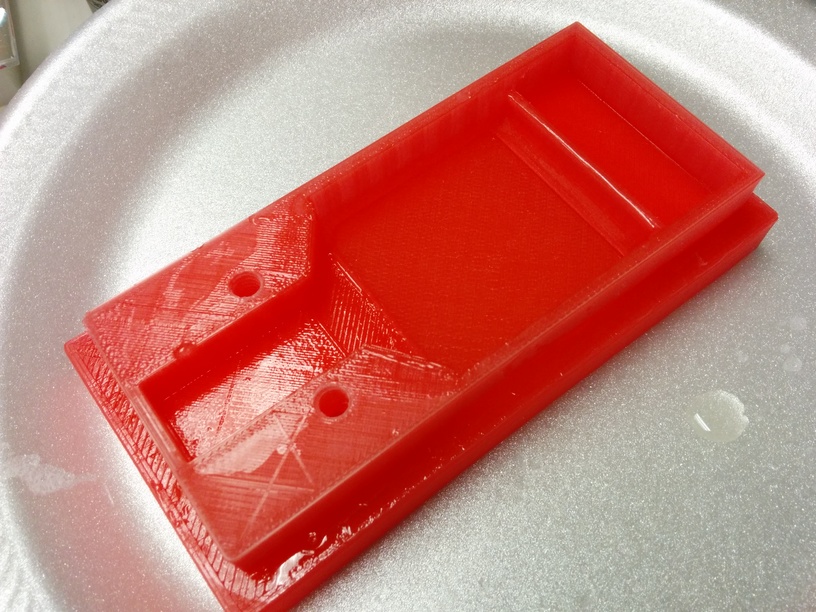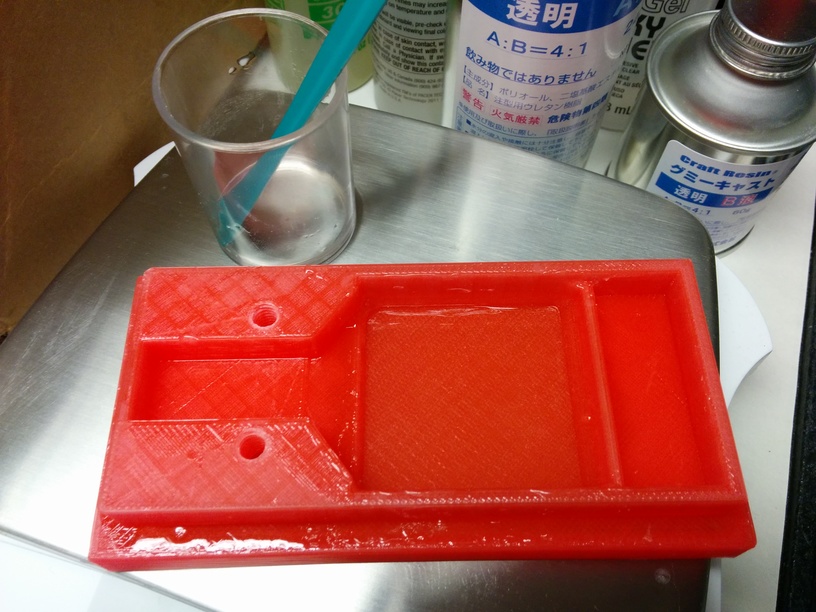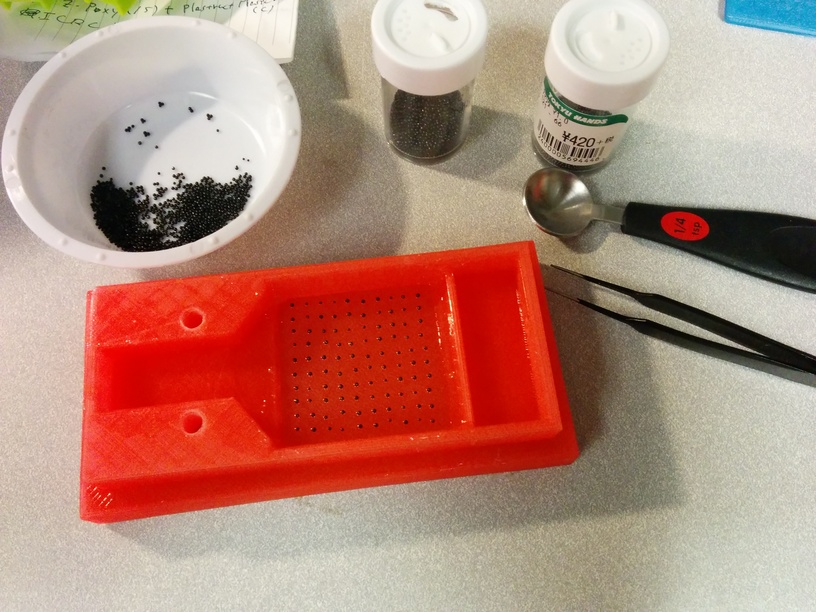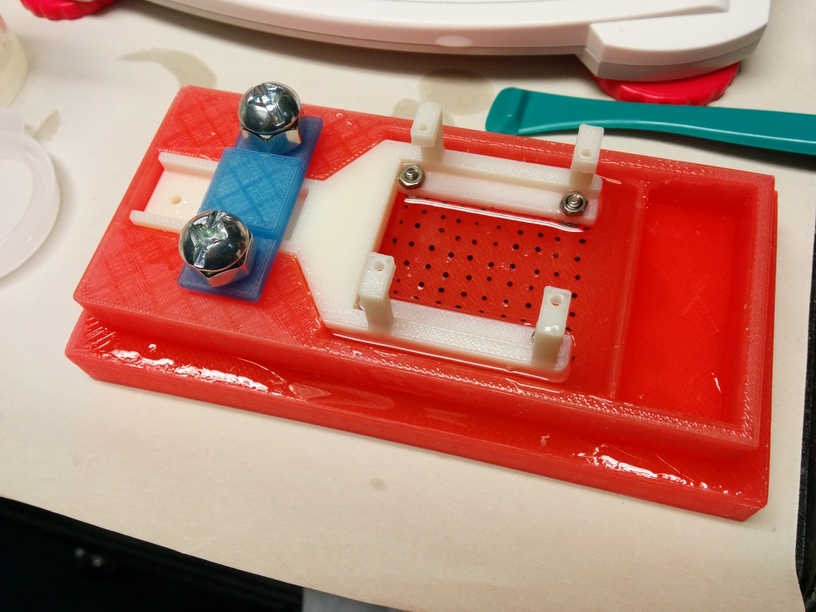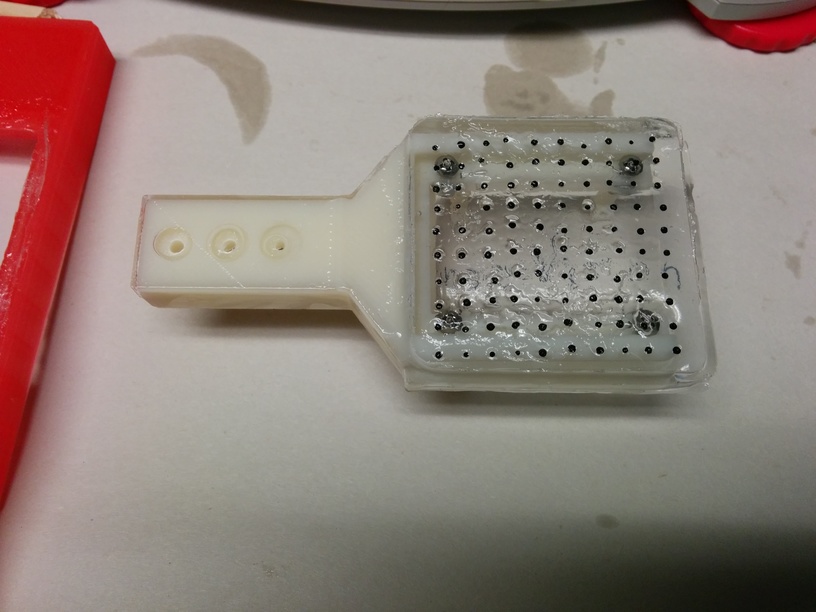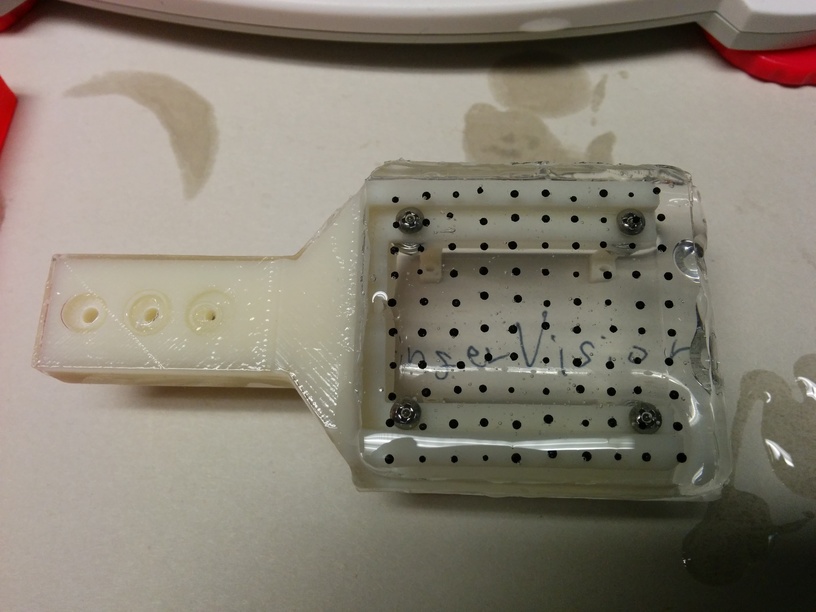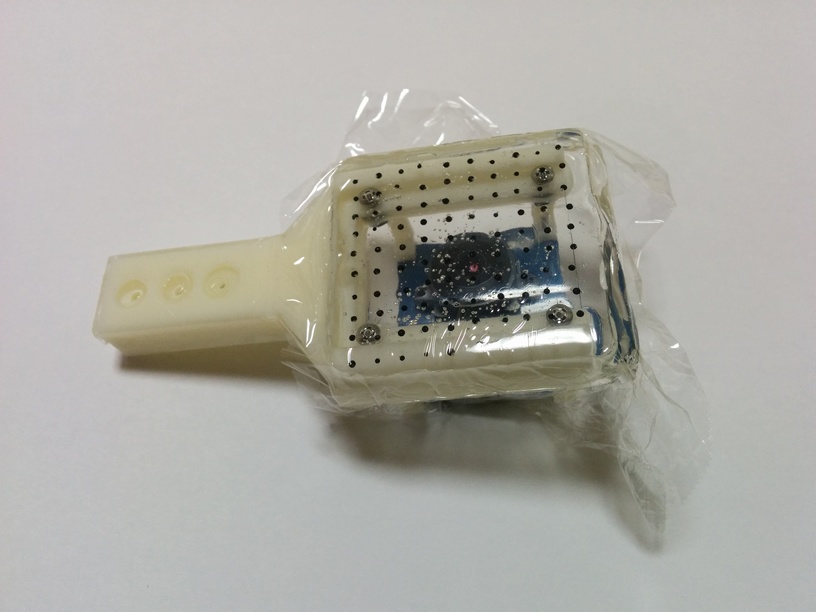†
We make a FingerVision for Robotiq Gripper.
- Finger frame: 3D printed with Dimension (in NAIST).
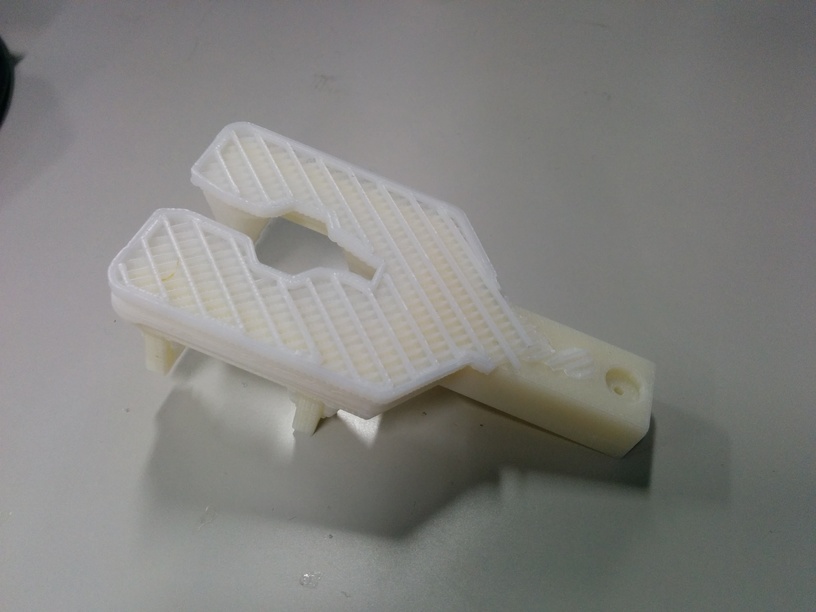
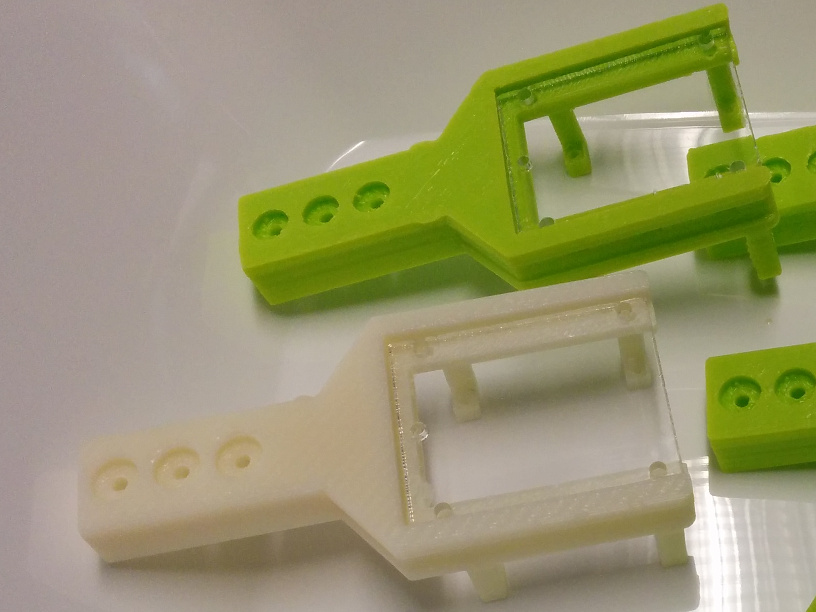
(White: New frame. Green: 3D printed frame with LulzBot.) - Silicone: Gummy Cast by Nisshin Resin (日新レジン) that has hardness durometer A 20 after cure (slightly harder than XP-565 (A 16)).
- Markers: Lead balls 1 mm.
- Note: Since our marker tracking software assumes that the markers are black, we painted the lead balls with black spray.
- Plastic film: サランラップ.
†
Major differences from the standard manufacturing process are:
- Gummy Cast does not cure on ComposiMold.
- Gummy Cast is bonded to 3D printed molds firmly. Gummy Cast breaks when being removed from mold. We could not find an adequate mold release for it. (Let me know if you know a good mold-release for Gummy Cast)
Solution †
We found that Plastruct Plastic Weld worked as mold release. Before casting Gummy Cast into molds, we paint Plastruct Plastic Weld on the mold.
As the replacement of ComposiMold, we also use a 3D printed mold coated with Plastruct Plastic Weld. Since the surface of the mold covered by Plastruct Plastic Weld is slippery, it cannot hold the markers (markers move when pouring silicone into the mold). So,
- Pour small amount of Gummy Cast into the mold.
- Wait until Gummy Cast cures.
- Place markers on surface.
- Pour Gummy Cast into the mold, and put the finger frame.
- Wait until Gummy Cast cures.
- Remove the finger frame with silicone from the mold.
Result of Casting †
After removing the frame with silicone from the mold, we found that the surface is not cured completely (we were not sure about the reason; it was after 12 hours).
In order to make the surface smooth, we coated the surface with Gummy Cast and waited it cured. Finally the surface became smooth.
We attached a camera and covered the skin with a plastic film.
FingerVision Test †
We use the software to test the FingerVision. Here's the result:
Basically it is working properly, but there are some issues:
- There are air bubbles. It is better to degass Gummy Cast after mixing the resin.
- Hardness A 20 might be slightly harder for daily life manipulation (such as grasping containers, vegetables, etc.).
